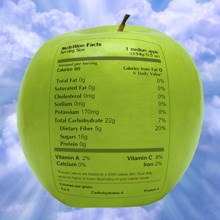Experts say consumers could lose out on valuable product information because food labelling legislation has made the publication of nutritional information on packaging much more complex and costly.
To print a nutrition table with a breakdown of how much fat, salt or carbohydrates are in the food, manufacturers now have to do intensive and costly testing of the food every three years.
Previously, manufacturers would estimate the nutritional data from the ingredients. They are now forbidden to do this. So, since offering nutritional information is voluntary, many will simply remove it from their labels.
Nicky Edwards, product developer for Ina Paarman Foods, explained the process: "Nutritional information in the absence of a product claim is not required.
"The reality is that many manufacturers will simply no longer include nutritional information on their product labels because of the cost and renewal every 36 months, which is ultimately to the disadvantage of the consumer."
Food consultant Norah-Ann Hayes agreed.
"The drawback of requiring testing for many products is that companies are not going to declare the nutrition information, especially smaller manufacturers.
"In addition to the lab testing, this needs to be done every three years, so the cost is not a once-off."
But Hayes said the law was necessary
"This is unfortunate but the previous method of calculating nutritional information was not accurate."
Hayes said consumers who wanted to know how healthy the product was and the quantities of sugar, salt and carbohydrates could check the ingredients list.
"If fat or sugar are near the top of the ingredients list it is going to be a high-kilojoule product. If salt is high up it is going to be a high-sodium product."
Under the food labelling law, products cannot contain the word "natural".
This means that products that use natural flavours instead of synthetics cannot indicate this to the consumer on the packaging.
Source: The Times





















































